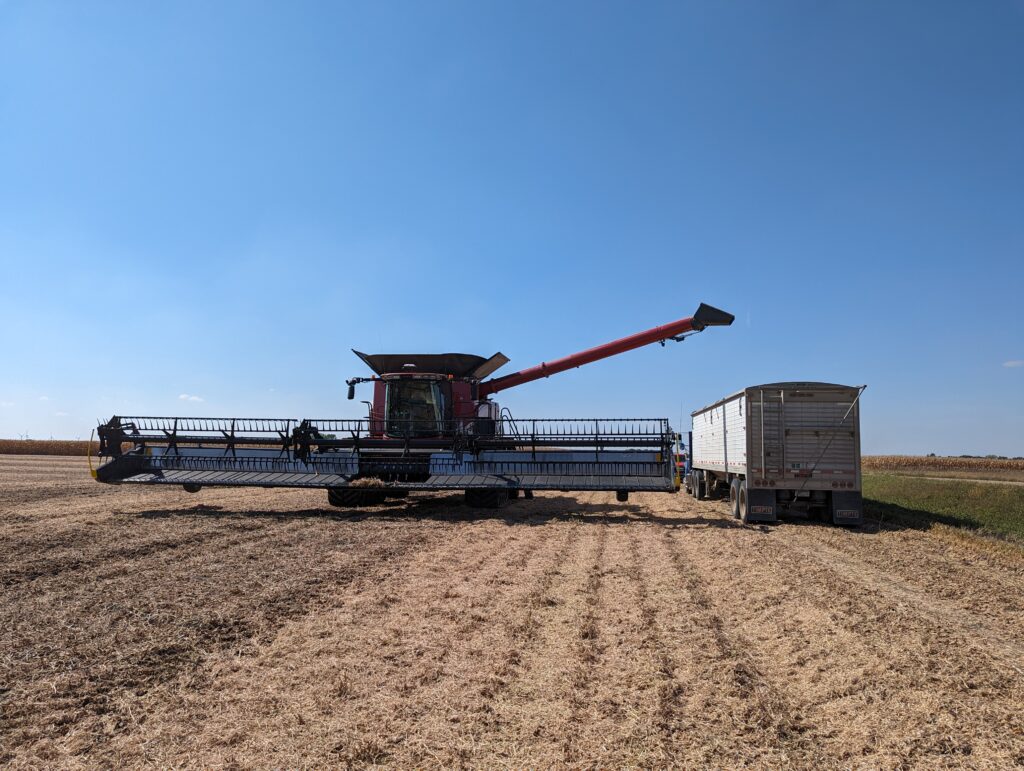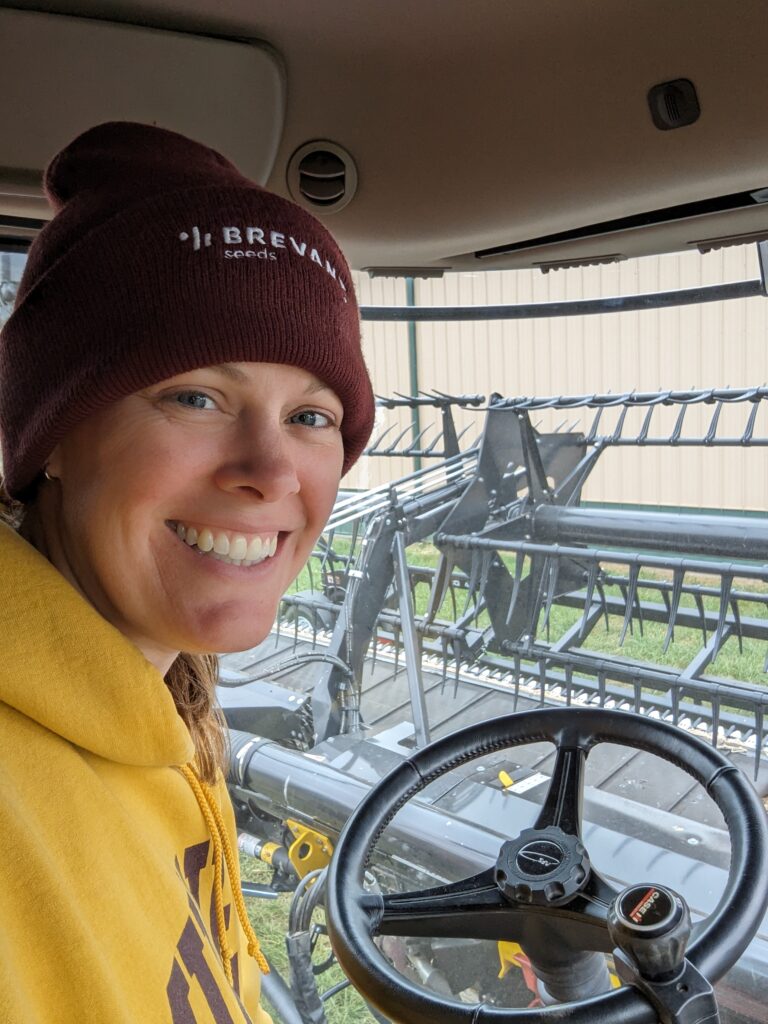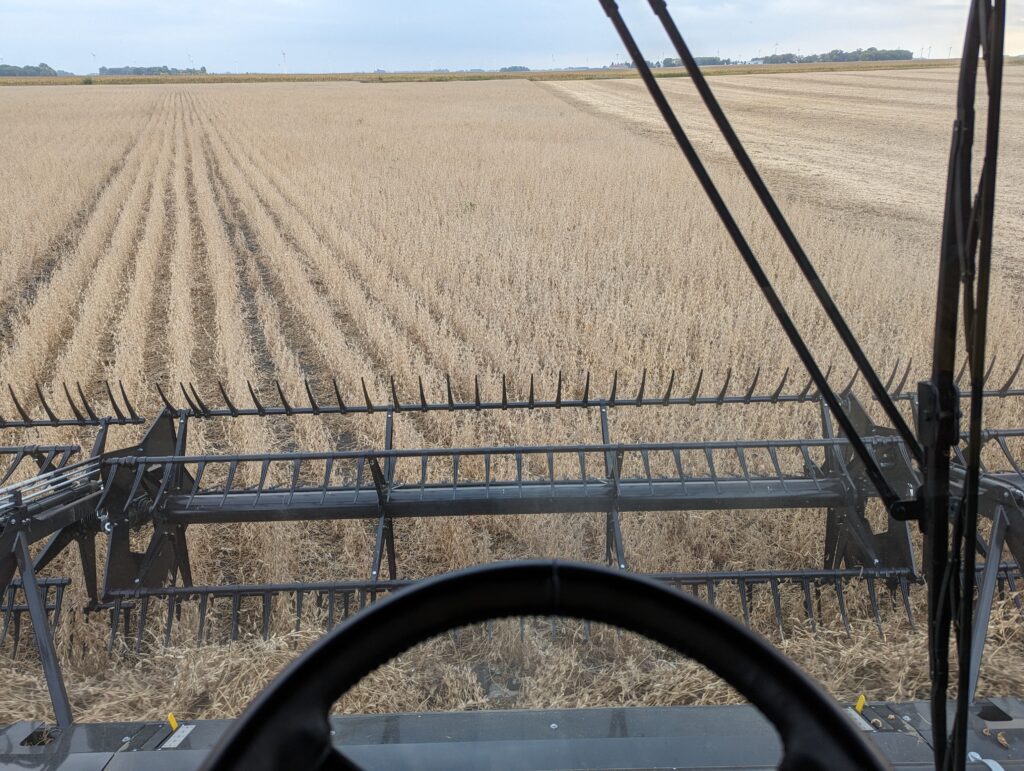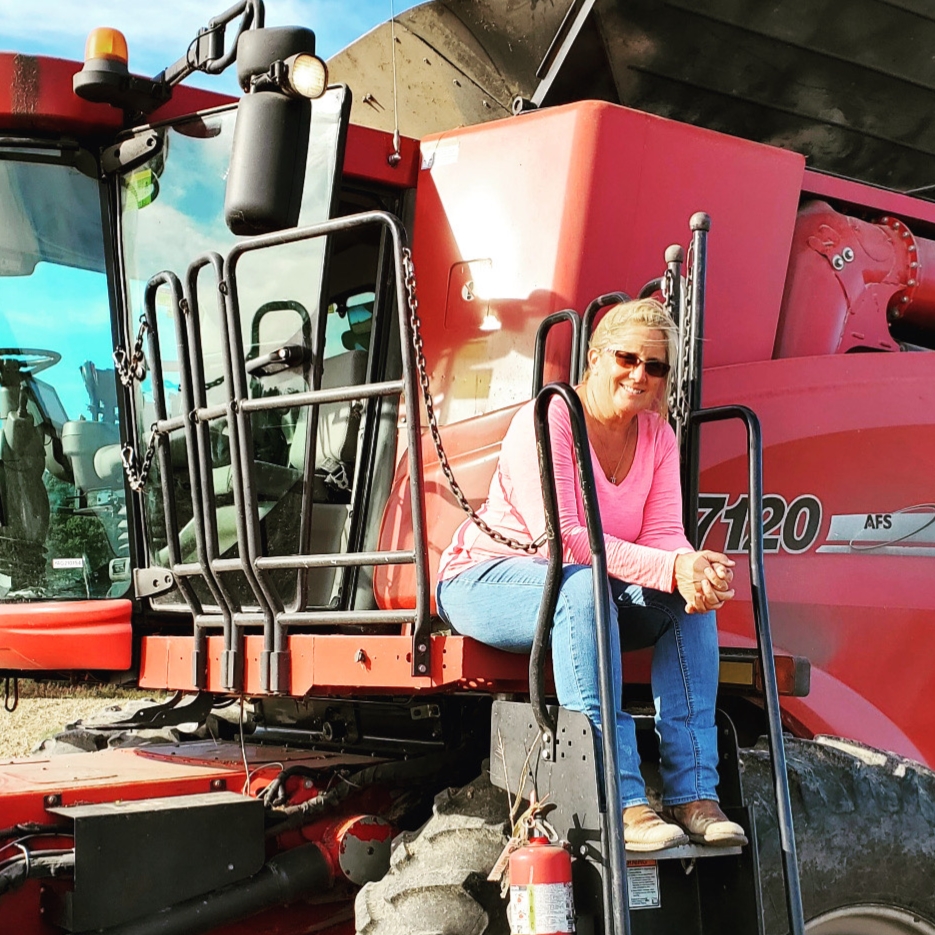Kristie Swenson, a farmer from Jackson MN, tried a new thing during harvest 2023: She drove her family’s combine through 1,800 acres of corn and soybeans.



I live and work on our family’s 1,800-acre corn and soybean farm near Jackson, Minnesota. Harvest is one of our busiest times of year. During harvest, my responsibilities typically include working my full-time off-the-farm job, making dinner for the kids, delivering meals to my husband, father, and neighbor working in our fields, helping unload trucks, driving to get parts from the equipment dealership, making sure the kids have their homework done and backpacks ready for school, and handling bathtime & bedtime. But my role changed big-time in 2023.
On Labor Day of 2023, a forklift rolled over my dad’s hand. Due to the extent of tissue and muscle damage, he went through multiple surgeries and wore a wound vac to reduce the fluids and swelling. When his surgeon released him at the end of that week, he told Dad that he could not use his hand for a while.
That’s when it really sunk in for me. I was going to be the one driving the combine to harvest our corn and soybean fields in a few weeks. And I had never driven one before. Trelin, my husband, could have done it, but we needed him to drive the trucks. He told me often that he had no doubt I could do it. I know other women who drive combines, and even though I was very intimidated, I knew I could do it, too.
Why The Combine Intimidated Me
Combine harvesters are intimidating for a number of reasons. First, these are very large, very heavy, and very expensive pieces of equipment. Thanks to years of technology, everything in our combine runs through a computer monitor in the cab. While I’m thankful we don’t have to do things the old-school way with wrenches and tools, this machine is operated by a lot of technology – a press of a button changes how high the combine is cutting the plants, or tips the cutting bar forward. Plus, the computer measures a lot of data, like yield, moisture levels, test weights, and fuel levels. So imagine driving the biggest tank you’ve ever seen, and it’s powered by advanced technology that you don’t fully understand.
Second, the settings vary depending on which crop you are harvesting and which field you are in. For example, as the corn plants go through the combine, the cobs are separated from the stalks, and the kernels are separated from the cobs. We want to keep the kernels in the combine grain tank, while the rest of the plant is chopped into fine pieces of organic matter that blows out the back of the combine.
The driver must pay attention that all parts of this system are working correctly and has to make adjustments when needed. As I drove along with intense focus on the field, my husband would call and tell me when I needed to make adjustments (for example, if kernels of corn were dropping on the ground, or the combine wasn’t separating the kernels from the cob like we wanted). While I didn’t know how to make the adjustments, thankfully my dad and our equipment salesman were available to guide me through what to do. Even though I was driving, we were a team working to ensure that the settings were precise for each field and crop.
Overall, the combo of driving, listening to the machine, paying attention to the quality of the grain, unloading on the go (emptying the combine grain tank into a grain cart while you continue to combine) and monitoring data can feel overwhelming. That’s why I decided early on to focus on the challenges of driving in my first few fields – moving forward, turning around and unloading. Dad or Trelin would ask me about the yield and I would respond, “I don’t know, I’m watching where I’m going!” I finally understood why my dad would say he wasn’t watching the monitor when he was driving!

The Driver’s Seat
from one part of a corn field to another. Reasons for that could include damage from insects or weather. Damage to plants can prevent them from having enough plant health or energy to produce much.
When I began to feel my confidence grow, I also started noticing a sense of relief. I was seeing the results first-hand for all of the effort we put into our crops that year. We planned. We planted seeds. We cared for the crops. We watched them grow. We waited out bad weather and storms. We walked the fields, scouting for signs of weeds, insects, and crop damage. We debated if the fields were ready to harvest. It wasn’t until I was driving the combine through the field that my perspective finally shifted. Knowing that these were seeds we had planted just months before and now they were ready to be harvested felt like an accomplishment. Like I could look back and see that I’m closer to the end than the beginning. It’s amazing to see God’s creation from the cab of the combine. I know why it’s my dad’s favorite job on the farm.
Future Harvests
I’m proud of myself for being able to step up and into this role. To me, it means my husband and I have proven we can handle the full scope of my family’s farming operation. My mom and dad both said on multiple occasions how proud they are of us for what we did. It was nice to hear.
I told my dad he could have his job back, and he laughed. I don’t know what future harvest seasons will look like. But I know that I can step in when Dad needs a break. If something happens in the future, I know that I can do new things. I know I can do hard things.

1 Bushel: A bushel is a unit of volume that can be used to measure the amount of a crop that has been harvested. One bushel of corn in the U.S. equals 56 pounds.
2 Acre: A unit of land area equal to 4,840 square yards. One soccer field equals 1.86 acres.


